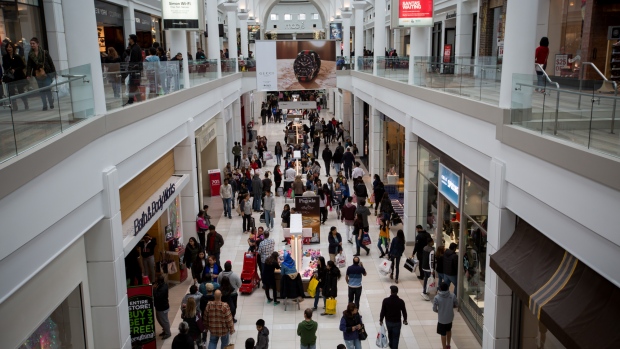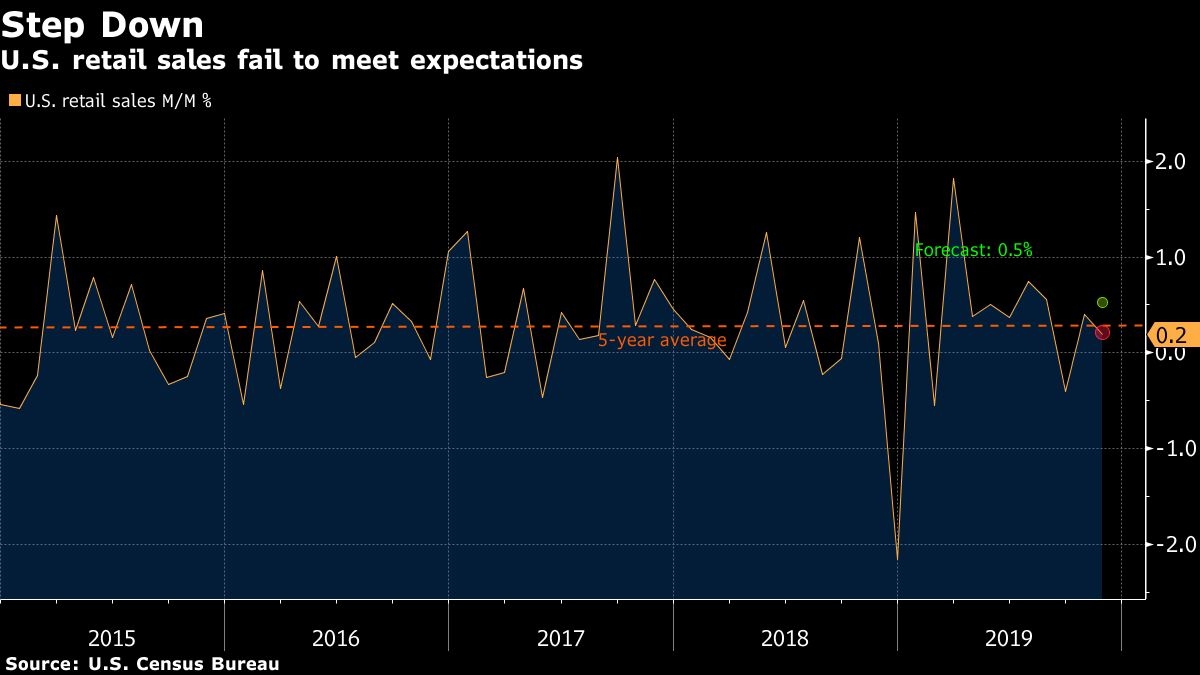Dec 13, 2019
U.S. retail sales miss forecasts as restaurants decline
, Bloomberg News

U.S. retail sales missed forecasts calling for an acceleration in November as clothing stores and restaurants posted declines, signaling the economy’s main engine may cool in the fourth quarter by more than previously thought.
The value of overall sales climbed 0.2 per cent after an upwardly revised 0.4 per cent increase the prior month, Commerce Department figures showed Friday. The median estimate in a Bloomberg survey called for a 0.5 per cent increase.
Sales in the “control group” subset increased a below-forecast 0.1 per cent following a 0.3 per cent gain. The measure excludes food services, car dealers, building-materials stores and gasoline stations, providing a reading considered more reflective of underlying consumer demand.
The data suggest a slowdown in business investment and weakness in manufacturing is weighing more broadly on Americans’ willingness to spend, which could mean a soft holiday-shopping season despite a relatively strong labour market, improved wage gains and record stock prices. At the same time, consumers likely still have enough wherewithal to support the expansion, and an easing of U.S.-China trade tensions should aid the economy in 2020.
Bloomberg News reported Thursday that President Donald Trump signed off on a phase-one trade deal with C restaurants hina, averting the Dec. 15 introduction of a new wave of U.S. tariffs on about $160 billion of consumer goods from the Asian nation, according to people familiar with the matter. U.S. stock futures fluctuated Friday morning after a CNBC report saying China still has concerns about targets for agricultural purchases.
Other early indications for the holiday shopping season were more optimistic, with BofA Global Research reporting retailers had the highest sales gains for the period up to Black Friday since 2013.

Online Retailers
Online sales were a strong element of Friday’s report. Sales at nonstore retailers, which includes e-commerce, rose 0.8% from the prior month, the biggest gain since August. They’re up 11.5 per cent from a year earlier, though that’s down from October’s increase.
A Bloomberg survey this month showed growth in consumer spending was expected to ease to a 2.1 per cent pace in the fourth quarter, from 2.9 per cent in the prior three months. Control-group sales have increased a paltry annualized 1.3 per cent over the latest three months, down from 3.4 per cent in the three months through October.
Even so, the weakness in consumer spending -- which accounts for two-thirds of the economy -- is likely not dire enough to spur the Federal Reserve to resume cutting interest rates.
Fed Chairman Jerome Powell noted in a press conference this week that consumer confidence remains elevated and that spending is healthy, with policy makers expecting to hold interest rates steady through the end of 2020. Last week’s jobs report for November showed payroll gains topped all economist estimates.
The retail sales report showed eight of 13 major categories increased, with solid gains in autos and electronics and appliance stores.
Health Care
Among declines, sales at health and personal care stores dropped by the most in almost a year, while receipts at apparel and sporting goods and hobby stores also fell. Restaurants posted a 0.3 per cent drop, also the largest in almost a year.
Filling-station receipts increased 0.7 per cent, the report showed. The retail figures aren’t adjusted for price changes, so sales could reflect changes in gasoline costs, sales, or both. Separate data on the consumer price index this week showed that gasoline prices rose 1.1 per cent in the month, which could have boosted these figures.
Excluding automobiles and gasoline, retail sales were little changed, following a 0.2 per cent gain the previous month.
The sales data don’t capture all household purchases and tend to be volatile from month to month. Personal-spending figures will offer a fuller picture of U.S. consumption in data due Dec. 20.
A separate Labor Department report Friday added to signs of muted inflation pressures in the economy. The U.S. import price index rose 0.2 per cent in November from the prior month, matching forecasts, and fell 1.3 per cent from a year earlier. Excluding petroleum, the index was also up 0.2 per cent from the prior month.
--With assistance from Kristy Scheuble and Sarina Yoo.